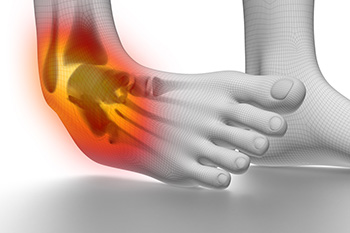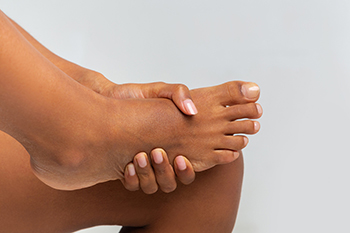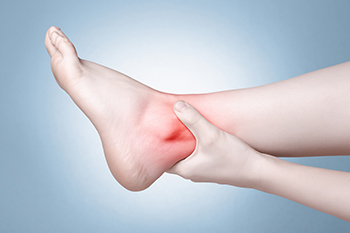November 2023
Identifying a Child’s Foot Problems

Most children take their first steps between eight and 18 months of age. Initially, toddlers often exhibit flat feet or a tendency to turn their feet inwards due to muscle strength and ligament stiffness catching up with their overall development. This flat-footedness typically improves as the bones strengthen and the feet gain more muscle support. Additionally, some toddlers may walk with one or both feet turned inwards, known as in-toeing, which can originate from the foot, lower leg, or upper leg. In rare cases, toddlers may walk with their feet turned outwards, or out-toeing. Parents should also look for signs such as abnormally shaped toes, persistent or painful ingrown toenails, bunions, foot stiffness, limping, or a sudden change in the child's walking pattern. Other common causes of foot pain include ingrown toenails that persist, and deformities or lumps in the foot. If your child complains of pain while walking, limps, or demonstrates a significant change in their walking pattern, or if your child hasn't started walking by the age of two, a consultation with a podiatrist can help rule out potential developmental concerns. In cases of pain, limited function, or a sudden change in your child's walking pattern, it is a good idea to schedule an appointment with a podiatrist for a thorough exam and diagnosis.
The health of a child’s feet is vital to their overall well-being. If you have any questions regarding foot health, contact John Killough, DPM of Regional Foot Center. Our doctor can provide the care you need to keep you pain-free and on your feet.
Tips for Keeping Children's Feet Healthy
- Make sure their shoes fit properly
- Look for any signs of in-toeing or out-toeing
- Check to see if they have Clubfoot (condition that affects your child’s foot and ankle, twisting the heel and toes inward) which is one of the most common nonmajor birth defects.
- Lightly cover your baby’s feet (Tight covers may keep your baby from moving their feet freely, and could prevent normal development)
- Allow your toddler to go shoeless (Shoes can be restricting for a young child’s foot)
- Cut toenails straight across to avoid ingrown toenails
- Keep your child’s foot clean and dry
- Cover cuts and scrapes. Wash any scratches with soap and water and cover them with a bandage until they’ve healed.
If you have any questions, please feel free to contact our offices located in Charleston and Effingham, IL . We offer the newest diagnostic and treatment technologies for all your foot care needs.
Facts About Chronic Ankle Sprains

Ankle sprains occur when the ankle twists or turns, particularly in an inverted position, affecting the lateral ligaments. This strain forces body weight onto the outer edge of the ankle, resulting in stretching and potential tearing of ligaments that help to hold the ankle joint together. Repeated ankle sprains can lead to ankle instability, where the ankle turns inward during physical activity. Individuals who experience chronic ankle sprains may face thickening and irritation of previously sprained ligaments, causing impingement problems and discomfort near the ankle joint's edge. A severe variant, known as a high ankle sprain, damages supportive ligaments above the ankle joint. Recovery from a recurring sprain takes at least twice as long compared to more common sprains. For that reason, prevention is key. This involves performing exercises to strengthen ankle supporting muscles, wearing appropriate footwear for specific activities, and staying mindful of uneven surfaces. Prioritizing ankle health through preventive measures, seeking prompt medical attention, and following a comprehensive rehabilitation plan, can minimize the long-term effects of ankle sprains. Strengthening exercises, wearing proper footwear, and certain ankle braces can help to reduce the risk of ankle sprains. If you have sprained an ankle, it is suggested that you make an immediate appointment with a podiatrist for treatment.
Although ankle sprains are common, they aren’t always minor injuries. If you need your ankle injury looked at, contact John Killough, DPM from Regional Foot Center. Our doctor can provide the care you need to keep you pain-free and on your feet.
How Does an Ankle Sprain Occur?
Ankle sprains are the result of a tear in the ligaments within the ankle. These injuries may happen when you make a rapid shifting movement while your foot is planted. A less common way to sprain your ankle is when your ankle rolls inward while your foot turns outward.
What Are the Symptoms?
- Pain at the sight of the tear
- Bruising/Swelling
- Ankle area is tender to touch
- In severe cases, may hear/feel something tear
- Skin discoloration
Preventing a Sprain
- Wearing appropriate shoes for the occasion
- Stretching before exercises and sports
- Knowing your limits
Treatment of a Sprain
In many cases, the RICE method (Rest, Ice, Compression, and Elevate) is used to treat ankle sprains. However, you should see a podiatrist to see which treatment option would work best with your injury. In severe cases, surgery may be required.
It is important to ask your doctor about rehab options after you receive treatment for your injury. Stretching, strength training, and balance exercises may help the ankle heal while also preventing further injury.
If you have any questions, please feel free to contact our offices located in Charleston and Effingham, IL . We offer the newest diagnostic and treatment technologies for all your foot care needs.
Warning Signs From Your Feet

The condition of your feet can offer valuable insights into your overall health. For instance, if your feet are persistently cold, it may signal hypothyroidism, a condition that slows your metabolism. Yellow toenails may be a sign of lymphedema or respiratory issues. Persistent yellowing warrants a visit to a podiatrist for a diagnosis and treatment options. Painful foot cramps can result from dehydration or nutrient deficiencies. It is a good idea to stay hydrated, maintain a balanced diet, and consider drinking low-calorie sports drinks with electrolytes to prevent and relieve foot cramps. An enlarged, painful big toe may indicate gout. This is a form of arthritis that often affects the big toe. It results from an overabundance of purines in the system and can cause flare ups of extreme pain, swelling, and redness in the big toe. Reducing the risk of gout involves moderating alcohol intake and avoiding red meat and seafood consumption. If you are experiencing unusual types of foot problems, or suspect you may have gout, it is suggested that you make an appointment with a podiatrist for a full diagnosis and treatment options.
Everyday foot care is very important to prevent infection and other foot ailments. If you need your feet checked, contact John Killough, DPM from Regional Foot Center. Our doctor can provide the care you need to keep you pain-free and on your feet.
Everyday Foot Care
Often, people take care of their bodies, face and hair more so than they do for their feet. But the feet are a very important aspect of our bodies, and one that we should pay more attention to. Without our feet, we would not be able to perform most daily tasks.
It is best to check your feet regularly to make sure there are no new bruises or cuts that you may not have noticed before. For dry feet, moisturizer can easily be a remedy and can be applied as often as necessary to the affected areas. Wearing shoes that fit well can also help you maintain good foot health, as well as making it easier to walk and do daily activities without the stress or pain of ill-fitting shoes, high heels, or even flip flops. Wearing clean socks with closed shoes is important to ensure that sweat and bacteria do not accumulate within the shoe. Clean socks help to prevent Athlete’s foot, fungi problems, bad odors, and can absorb sweat.
If you have any questions please feel free to contact our offices located in Charleston and Effingham, IL . We offer the newest diagnostic and treatment technologies for all your foot and ankle needs.
Infections and Ankle Pain

An infection in the ankle can lead to swelling and discomfort. One common type of skin infection on the ankle is cellulitis. People with diabetes are particularly susceptible to foot and ankle infections, making regular inspections for bruises, cuts, and scrapes crucial. When someone with diabetes leaves a foot or leg infection untreated, it can progress to gangrene. Gangrene is a serious condition that causes tissues to die, possibly resulting in a severe infection or reduced blood supply. Treatment for ankle infections varies depending on their type and severity. In cases of bacterial infections, a podiatrist will prescribe antibiotics to combat the infection. However, if the infection has advanced to gangrene, surgical intervention may be necessary to remove the damaged tissue and prevent further complications. Early detection and appropriate treatment are essential in managing these infections. If you have ankle pain and a brewing infection in this area, it is strongly suggested that you see a podiatrist as quickly as possible for a proper diagnosis and immediate treatment.
Ankle pain can have many different causes and the pain may potentially be serious. If you have ankle pain, consult with John Killough, DPM from Regional Foot Center. Our doctor will assess your condition and provide you with quality foot and ankle treatment.
Ankle pain is any condition that causes pain in the ankle. Due to the fact that the ankle consists of tendons, muscles, bones, and ligaments, ankle pain can come from a number of different conditions.
Causes
The most common causes of ankle pain include:
- Types of arthritis (rheumatoid, osteoarthritis, and gout)
- Ankle sprains
- Broken ankles
- Achilles tendinitis
- Achilles tendon rupture
- Stress fractures
- Tarsal tunnel syndrome
- Plantar fasciitis
Symptoms
Symptoms of ankle injury vary based upon the condition. Pain may include general pain and discomfort, swelling, aching, redness, bruising, burning or stabbing sensations, and/or loss of sensation.
Diagnosis
Due to the wide variety of potential causes of ankle pain, podiatrists will utilize a number of different methods to properly diagnose ankle pain. This can include asking for personal and family medical histories and of any recent injuries. Further diagnosis may include sensation tests, a physical examination, and potentially x-rays or other imaging tests.
Treatment
Just as the range of causes varies widely, so do treatments. Some more common treatments are rest, ice packs, keeping pressure off the foot, orthotics and braces, medication for inflammation and pain, and surgery.
If you have any questions, please feel free to contact our offices located in Charleston and Effingham, IL . We offer the newest diagnostic and treatment technologies for all your foot care needs.





